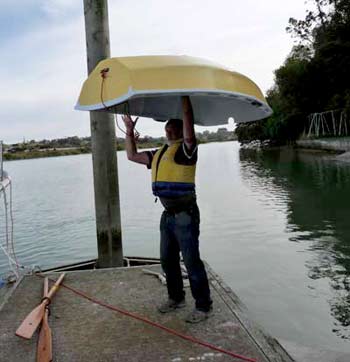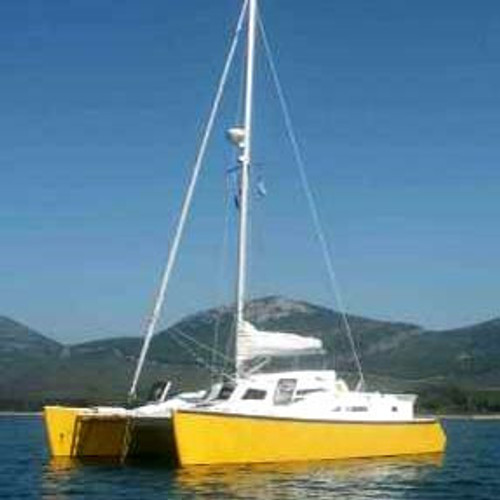For Scraps as printed plans, click HERE
Our tides here run to 10 or 12 ft, which means that little Spook has to be anchored out in close to 20 ft of water at high tide in order to not be aground at low tide.
Spook, my 18ft gaff sloop lives on a trailer and I was towing it to the water 80 miles away with a four door saloon, no roofrack, no cargo space big enough for a dinghy and I was tired of not being able to go ashore when cruising. Getting naked, putting the clothes in a drybag and swimming ashore has only limited appeal so I needed a very small boat, one that I could carry upside down in the cockpit of the mothership when on its trailer.
There was 5ft, 4-½ in of available length between the rudder post and the cabin after bulkhead, so the new boat was to be 5ft, 4-¼.

Designing very small boats is "interesting". There is much less room for compromise and they have to work in so many ways, they have to be stable, row well, tow straight and dry at well above hull speeds, be light and easy to carry and so on.
"Offcuts" was the first, and she worked really well. She will carry two careful people, rows a lot better than you'd expect, is very light and does all of her tasks with aplomb.
I build a lot of small boats as experiments, and at about this time sold the car and replaced it with a crew cab pickup, the cargo space being big enough to accommodate a slightly bigger "little boat".
So when my friend Annie Hill of "Voyaging on a small income" fame came to visit and expressed interest, we very soon came to a deal and "Offcuts" (guess what she was built from) went off to become the tender for her little liveaboard junk rigged yacht Fantail. She suits Annie, being well within the petite womans ability to lift aboard, and small enough to stow on deck while being safe and seaworthy enough to do her in the water duties.
Check up on Annie here: http://www.anniehill.blogspot.co.nz/
So I had to build another little boat. The first one was just about at the practical minimum capacity for me, so with the lessons learned from "Offcuts" I set out and drew up "Scraps" (yes, more leftover materials from other jobs).

The build went well, took me perhaps 18 hours over a few weeks of occasional pottering at her build, and she has proven to be much more boat than her diminutive predecessor. Much more capacity, much more stable, faster under oars and generally a very likeable little boat.
I set nets out of mine, tow her behind my 40 ft motor boat, row her on the estuary of an evening and like her a lot.
I might even keep this one!

| Specification | Metric | Imperial |
| Length | 1890mm | 6ft 3in |
| Width | 1140mm | 3ft 9in |
| Depth when stowed on a flat surface | 500mm | 1ft 8in |
| Weight, approximately | 22 kg | 48 lbs |







